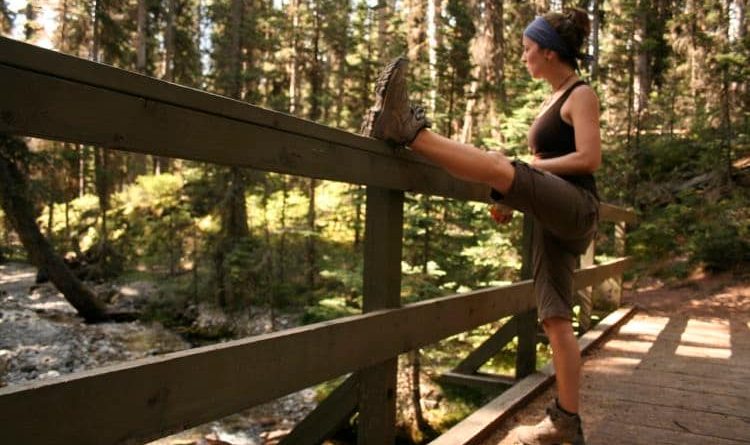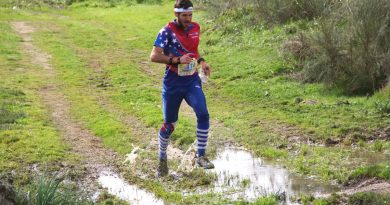11 Things Every Hiker Should Know About Fitness
Learn these key hiking fitness principles to get the most out of your time on the trail.
1. It’s better to exercise a little, and often than to do a lot once in a while.
If you push too hard in a workout, you’ll feel sore days after and won’t be able to train again. It’s far better to start slowly and progress consistently over the course of months than to overdo it in the beginning. Training for a big hike? Start by walking just 20 minutes, every other day. Add 10% per week and you’ll be ready before you know it.
2. You should be using a foam roller…
…or a massage stick or ball to place pressure on tight spots within your muscles. Gentle pressure can often release tension and restore the muscle to its optimal length, which means quicker recovery times and reduced risk of injuries on the trail.
If you’re in a very rural area on your hike, common muscles that respond well to massage are calves, hamstrings, and quadriceps. If you locate a tight spot as you’re using a foam roller, hold the position for 30 to 90 seconds. During rest breaks on the trail, use a full, 1-liter water bottle in place of the foam roller.
3. You need to stretch after every hike.
Stretching after a hike decreases the chances of injury, can help to prevent muscle imbalances, and speeds the recovery process. When you get back to your car at the trailhead, focus on your calves, quadriceps, hamstrings, and hip flexors. Hold the stretch for at least 30 seconds to get the full benefit. Try adding yoga once a week for a full-body stretch.
4. But be careful how you warm up beforehand.
Unlike the static stretches described above, dynamic stretches are best for preparing the body for activity. Perform 10 repetitions of double heel lifts, lunges, and leg swings just before you hike. These stretches will reduce the risk of ankle sprains and pulled muscles on the trail.
5. Improving your balance will help prevent injuries.
Balance is one of the most important components of a fitness program. Training by creating controlled instability at home reduces the risk of ankle rolls and knee damage on the trail. Try balancing on one leg (close your eyes to make it harder) or single-leg balance reach progressions.
6. You should be strengthening your core.
All movement originates from the core, which includes all the muscles of the hips, upper legs, and waist. A strong core promotes proper posture, improves breathing, and reduces the risk of ankle sprains and knee pain. To improve your hiking posture, try planks, which strengthen the muscles along the spine, while floor cobras and ball back extensions develop the back strength to carry a heavy pack.
7. Strength training will make you a better hiker.
Functional movements like squats, lunges, step-ups, and deadlifts mimic the movement patterns you’ll encounter on the trail. Performing the movements with weights in a controlled setting allows your joints to move through their full range of motion, building strength, and stability. Start with body weight, then add a pack or dumbbells to increase the resistance.
8. Fine-tuning your water intake can improve your performance.
Aim for 16 to 28 ounces of water per hour on the trail. Drink more than 28 ounces per hour without properly replenishing your body’s salts and you risk life-threatening hyponatremia. Drink less and you run the risk of dehydration. To increase your fluid intake on the trail, try using a hydration system.
9. Your food is your fuel.
The trail is not the place for calorie restriction. Every hour, stop and eat a 100- to 200-calorie snack like Goldfish crackers or energy gels. This will keep your blood sugar levels stable and give your body a nice break. For all-day hikes, bring some full meals that contain fats, carbohydrates, and protein.
10. Add interval training to crush the hills.
Interval training means a bout of high intensity, followed by a recovery period. Intervals prepare you for the hills and step-ups that are common on the trail. Try to keep the intervals playful by picking a place 50 yards up the trail and increasing your pace until you reach it. Hike for a few minutes until you’ve fully caught your breath, then repeat.
11. Rest is part of training.
When designing training programs for my athletes, I make sure rest is an integral part of the program. A typical week cycles between hiking days and strength/flexibility days, with one full day of rest per week. After a maximum of 12 weeks of training, take a week off. The rest periods allow your body to fully remove all the waste products built up by training and be fully rested for the next training cycle. Rest also provides a psychological break from the rigors of training.
The article was originally seen at https://www.backpacker.com/skills/11-hiking-fitness-tips
Originally posted 2018-05-24 11:11:01.




